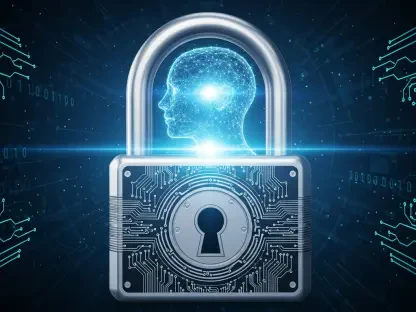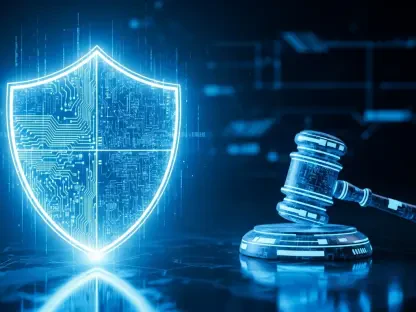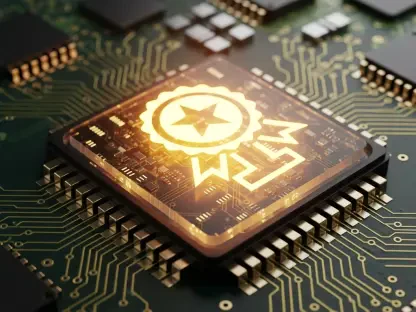The rise of Internet of Things (IoT) devices has been nothing short of a technological revelation. In homes, cities, and industries, smart fridges, wearable fitness trackers, and network-connected light bulbs are now commonplace. However, as the deployment of these interconnected devices reaches staggering numbers, the threat of cyberattacks becomes increasingly pressing. With vulnerabilities like default passwords and unpatched security flaws proving common, the advent of IoT regulation aimed at enhancing cybersecurity is not just timely—it’s critical. Effective regulatory frameworks are crucial in ensuring these devices do not compromise consumer security and privacy.
Present-Day Trends in IoT Cybersecurity Regulations
Growing Standards and Their Adoption
Recent data underlines the exponential growth of IoT devices and the corresponding need for robust cybersecurity measures to safeguard them. As the proliferation of these gadgets continues, numerous reports have identified a decisive shift towards implementing strong IoT regulations worldwide. For instance, the European Union has enforced comprehensive cybersecurity standards through the Cyber Resilience Act. Simultaneously, amendments to directives such as the EU’s Radio Equipment Directive underscore the increased focus on secure IoT device integration. Collectively, these efforts aim to address systemic threats by mandating essential security features across all connected products.
Impactful Regulatory Applications
One of the most telling demonstrations of IoT cybersecurity regulations can be seen in their real-world application across various sectors. For instance, smart city projects integrating connected infrastructure are experiencing tighter security oversight to safeguard against potential breaches. In parallel, the healthcare industry, with its reliance on connected medical devices, has witnessed significant improvements in patient data protection due to enhanced regulations. Companies like the makers of these devices have successfully embedded stringent security protocols within their operations, ensuring compliance and bolstered consumer trust.
Expert Insights and Industry Perspectives
Necessity for Robust Regulations
Industry experts underscore the urgent need for top-tier IoT security regulations. Amid increasing cyber threats, these specialists emphasize the importance of incorporating “security-by-design” principles as standard practice. However, they also recognize the challenges faced by manufacturers and stakeholders in uniformly enforcing these regulations. Differences in regulatory approaches across regions often complicate compliance. Despite such challenges, several authorities in the field are optimistic about the growing acceptance and readiness of the industry to embrace standardized security norms.
Industry’s Readiness and Acceptance
Conversations with industry veterans reveal a trend towards gradual acceptance of these new security standards. While some business leaders express concerns about the costs and logistics associated with compliance, overall readiness remains favorable. The industry’s adoption of frameworks like the United States’ Cyber Trust Mark highlights a positive trajectory toward ensuring consumer safety and privacy. Ongoing dialogue about reducing barriers and encouraging cooperation across jurisdictions is pivotal in the ongoing effort to bolster IoT security worldwide.
The Future of IoT Cybersecurity Regulations
Emerging Technologies and Developments
The future of IoT cybersecurity appears promising as emerging technologies further strengthen regulatory measures. Expected advancements include utilizing Artificial Intelligence (AI) and Machine Learning (ML) in threat detection and prevention. These innovations are expected to play a crucial role in automating security processes, making them more efficient and effective. The long-term benefits of such developments for businesses and consumers include enhanced protection, reduced liability risks, and an improved customer experience due to safer, more reliable devices.
Overarching Implications
Comprehensive, widespread implementation of IoT cybersecurity regulations promises numerous challenges and opportunities. As regulations become more standardized, the global marketplace is likely to experience reduced complexity and increased market access for compliant devices. However, cybersecurity remains a dynamic field, necessitating constant updates to regulatory frameworks. Businesses and consumers alike must adapt to these evolving standards, ensuring they remain vigilant and proactive in safeguarding digital assets and personal information.
Concluding Thoughts
In the past, IoT regulation reached a turning point, reinforcing consumer protection and device security on a global scale. This era witnessed a harmonized approach to cybersecurity through binding regulations, voluntary labels, and consumer awareness efforts. As stakeholders navigated these changes, they recognized the need to balance effective regulation with technological advancement and international cooperation. Addressing evolving threats required both businesses and consumers to prioritize cybersecurity, ensuring the safety and seamless operation of interconnected technologies.









